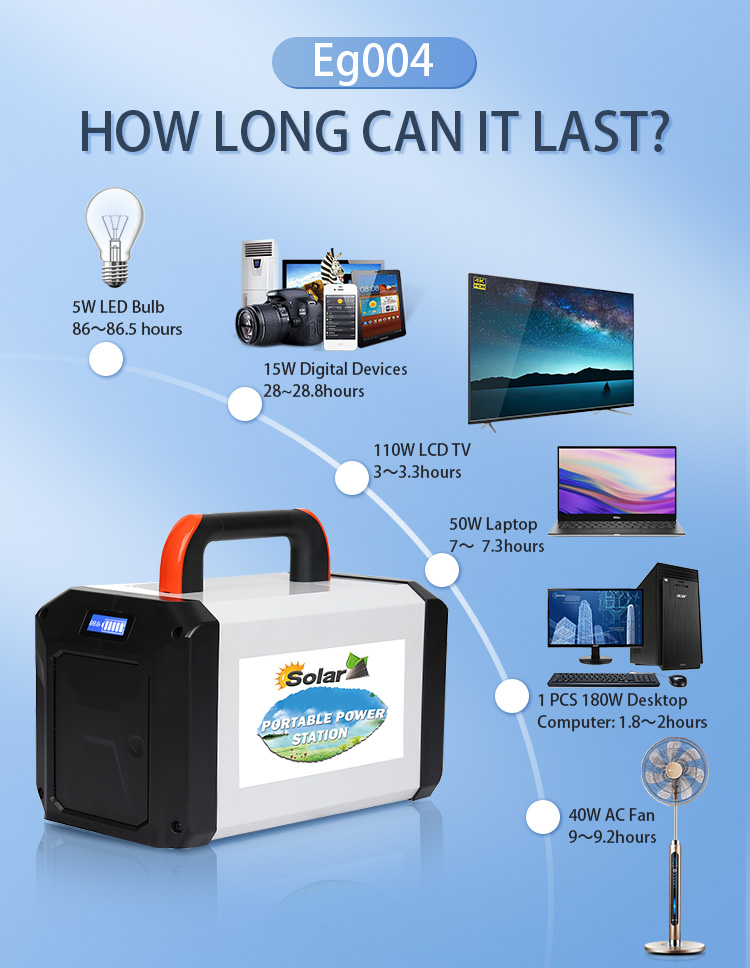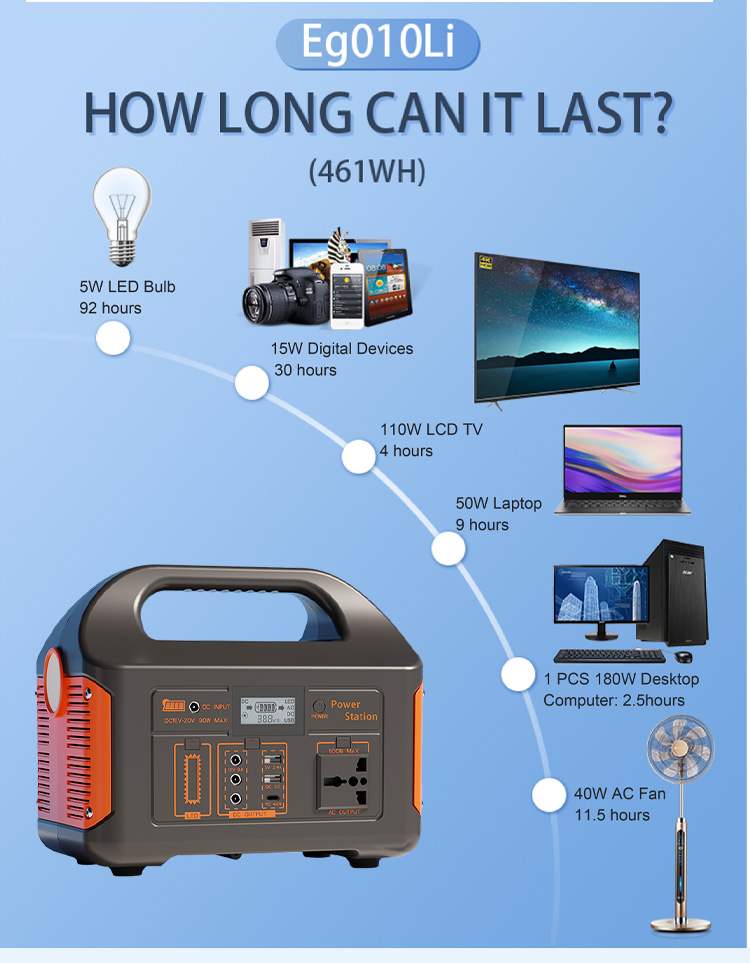In today's energy storage field, lead-acid batteries and lithium batteries are two common energy storage solutions. They each have unique characteristics and advantages, but also have some limitations. The following is a detailed comparison between lead-acid battery energy storage and lithium battery energy storage.
Eg004pb (lead-acid power station)

Eg010Li (Lithium ion Power station):

I. Performance Characteristics
1. Energy density
1. Lithium battery: It has a relatively high energy density and can store more energy under the same volume and weight. This gives lithium batteries a significant advantage in application scenarios with high requirements for space and weight, such as electric vehicles and portable electronic devices.
2. Lead-acid battery: The energy density is relatively low, and the volume and weight are large. This limits its application in some occasions that are sensitive to space and weight.
2. Charge and discharge efficiency
1. Lithium battery: The charge and discharge efficiency is high, usually reaching more than 90%. This means that during the charging and discharging process, the energy loss is small, and the stored energy can be used more effectively.
2. Lead-acid battery: The charge and discharge efficiency is relatively low, generally around 80%. Moreover, as the number of uses increases, the charge and discharge efficiency of lead-acid batteries will gradually decline.
3. Cycle life
1. Lithium battery: The cycle life is long, generally reaching thousands or even tens of thousands of times. This makes lithium batteries more cost-effective in long-term use.
2. Lead-acid battery: The cycle life is relatively short, usually only a few hundred times. Frequent charging and discharging will accelerate the aging of lead-acid batteries and reduce their service life.
II. Safety
1. Lithium battery
1. In cases of overcharging, over-discharging, short circuit, etc., lithium batteries may experience thermal runaway, causing fires or explosions. Therefore, when using lithium batteries, a complete battery management system (BMS) is needed to ensure the safe operation of the battery.
2. However, with the continuous progress of technology, the safety of lithium batteries is also continuously improving. At present, some new types of lithium batteries use safer materials and designs, reducing safety risks.
2. Lead-acid battery
1. Lead-acid batteries have relatively high safety. Under normal use, safety accidents rarely occur. However, if lead-acid batteries are overcharged or short-circuited, flammable and explosive gases such as hydrogen will be generated, presenting a certain safety risk.
III. Cost
1. Initial investment cost
1. Lead-acid battery: The price is relatively low, and the initial investment cost is less. This makes lead-acid batteries still have certain competitiveness in some application scenarios that are sensitive to cost.
2. Lithium battery: The initial investment cost is relatively high, mainly due to the relatively complex material cost and manufacturing process. However, with the continuous maturity of lithium battery technology and large-scale production, its price is also gradually decreasing.
2. Maintenance cost
1. Lead-acid battery: Regular maintenance is required, such as adding distilled water and checking electrodes. The maintenance cost is relatively high, and the maintenance process is relatively cumbersome.
2. Lithium battery: The maintenance cost is low, and generally no regular maintenance is required. However, if a lithium battery fails, the repair cost may be relatively high.
IV. Application Scenarios
1. Lead-acid battery
1. Lead-acid batteries are suitable for application scenarios with lower cost requirements and lower requirements for energy density and cycle life, such as electric bicycles, UPS power supplies, solar street lights, etc.
2. In addition, lead-acid batteries have relatively high safety and are also used in some occasions with higher safety requirements.
2. Lithium battery
1. Lithium batteries are suitable for application scenarios with high requirements for energy density, cycle life, and charge and discharge efficiency, such as electric vehicles, energy storage power stations, portable electronic devices, etc.
2. With the continuous progress of lithium battery technology, its application range is also continuously expanding.
In conclusion, lead-acid batteries and lithium batteries have their own advantages and disadvantages in terms of performance characteristics, safety, cost, and application scenarios. When choosing an energy storage solution, comprehensive consideration should be given according to specific application needs and actual situations. If there are lower cost requirements and higher safety requirements, lead-acid batteries can be chosen; if there are higher requirements for energy density, cycle life, and charge and discharge efficiency, lithium batteries can be chosen. At the same time, with the continuous progress of technology, more new energy storage technologies may appear in the future energy storage market, providing more choices for users.